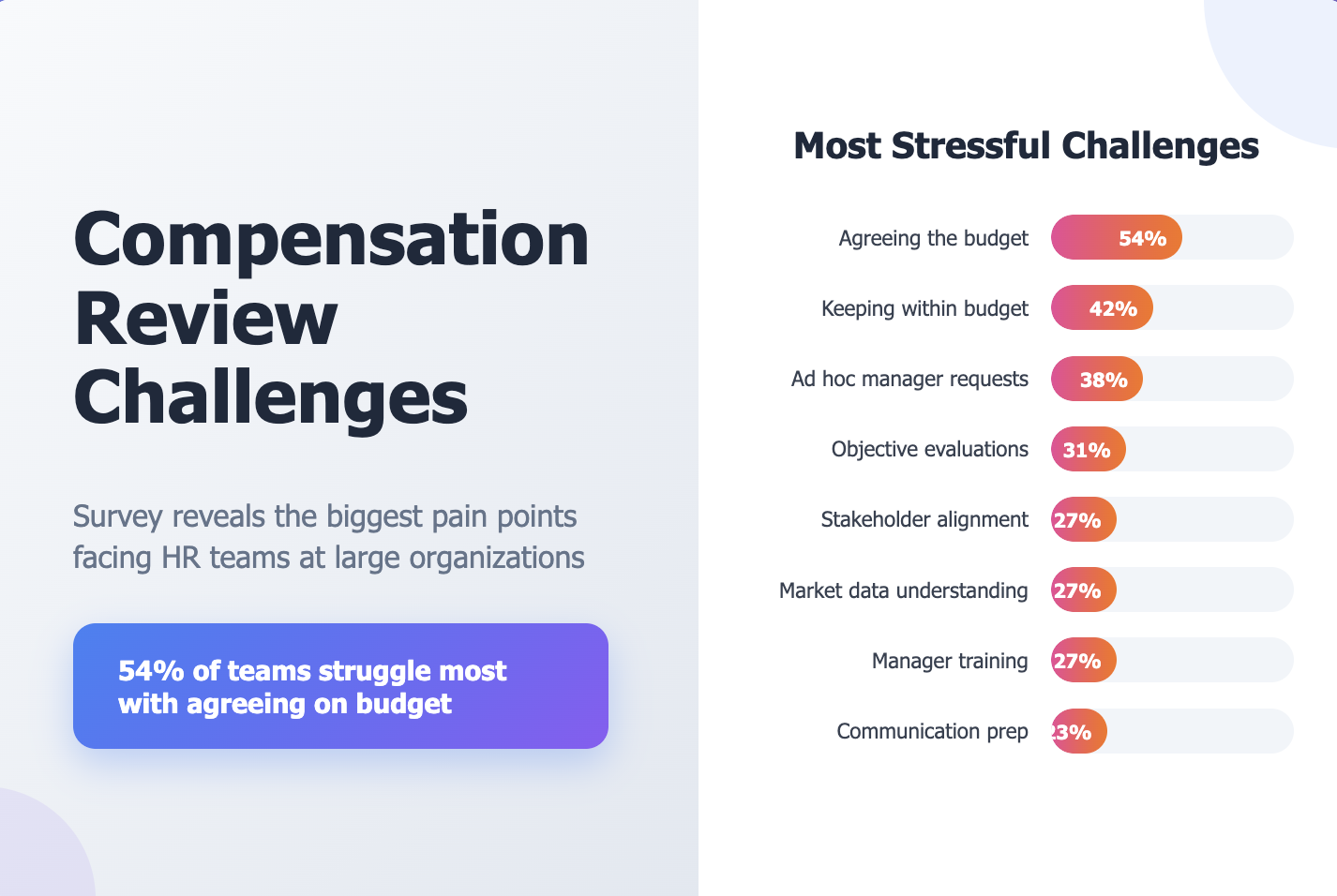Compensation Planning: A Guide to Recruiting and Total Rewards Alignment

Effective compensation planning requires seamless collaboration between total rewards and recruiting teams. In this expert guide, Joe Bast, VP of People at Crisp, shares essential strategies for aligning compensation planning processes with recruiting efforts to drive successful hiring outcomes.
Essential Components of Compensation Planning
Developing Your Compensation Strategy
Key planning elements:
- Comprehensive salary bands structure
- Clear total compensation philosophy
- Market-aligned pay positioning
- Role-specific compensation guidelines
Integrating Recruiting into Compensation Planning
Critical alignment areas:
- Offer strategy development
- Market data integration
- Salary bands implementation
- Compensation planning software utilization
Strategic Compensation Planning Process
1. Establish Clear Guidelines
Foundation elements:
- Define salary bands by role
- Set compensation planning parameters
- Create approval workflows
- Document offer guidelines
2. Implement Planning Tools
Essential resources:
- Compensation planning software
- Market data analysis tools
- Offer management systems
- Total compensation calculators
3. Monitor and Adjust
Key metrics:
- Offer acceptance rates
- Market competitiveness
- Salary bands effectiveness
- Compensation planning outcomes
Aligning Teams for Successful Planning
Data-Driven Decision Making
- Compensation Analysis
- Track market trends
- Monitor salary bands effectiveness
- Analyze offer competitiveness
- Review planning outcomes
- Recruiting Insights
- Gather market feedback
- Track competitor offerings
- Monitor industry trends
- Assess candidate expectations
Effective Communication Strategies
- Regular Planning Meetings
- Monthly compensation reviews
- Recruiting strategy alignment
- Salary bands updates
- Market trend discussions
- Stakeholder Coordination
- Executive alignment
- Hiring manager guidance
- Team collaboration
- Cross-functional planning
Expert Insights on Compensation Planning
Joe Bast emphasizes key success factors:
"The right compensation team starts with a total compensation philosophy. That's really important to anchor how you're going to value jobs in which markets."
Implementation Steps
- Build Strong Foundation
- Establish planning processes
- Define salary bands
- Create feedback systems
- Document guidelines
- Maintain Effective Systems
- Regular planning reviews
- Ongoing market analysis
- Continuous process improvement
- Tool optimization
- Foster Team Collaboration
- Align planning objectives
- Share market insights
- Coordinate strategies
- Monitor effectiveness
Planning for Success
Effective compensation planning requires:
- Clear strategic alignment
- Strong team collaboration
- Regular market analysis
- Continuous optimization
Essential Tools
Modern compensation planning relies on:
- Comprehensive planning software
- Market analysis tools
- Salary bands management
- Total compensation calculators
Want to learn more about implementing effective compensation planning strategies? Contact the Aeqium team for expert guidance and solutions.




